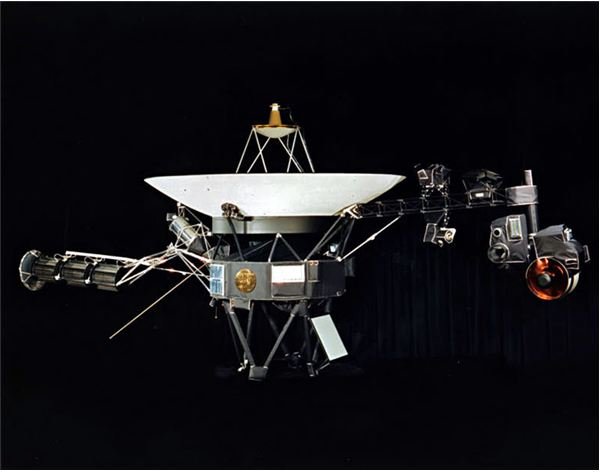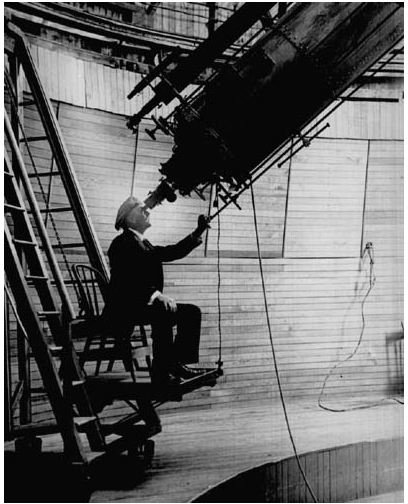The Myth About the 10th Planet in the Solar System - Neptune and the Sumerians
The myths surrounding the tenth planet in the solar system stems from the years following the discovery of Neptune in 1846. At the time, there were only eight known planets, however, many scientists believed that a ninth and tenth were very probable. This quest culminated in the research of Percival Lowell. He set out to explain the discrepancies in the orbits of Uranus and Neptune. Between 1913 and 1915, he conducted a search for a planet beyond Neptune. This culminated in his prediction that a planet half the size of Neptune had to be located further out in the solar system. In 1930, Pluto was discovered by Clyde Tombaugh. This realization helped continue the quest for further planets at the edge of the solar system.
Above right: Persival Lowell observing Mars. (Supplied by Wikimedia Commons; Public Domain; https://upload.wikimedia.org/wikipedia/commons/1/11/Percival_Lowell-observing_Mars_from_the_Lowell_Observatory.jpg)
Pluto

Despite the discovery of Pluto, a number of problems still existed with the orbit of the gas giants in the solar system. The size of the planet, mathematically, should have been approximately that of Earth in order to initially explain the gravitational effects. By mid-century, the size was found to be somewhere around the size of ten percent of Earth. This continued to be further downsized throughout the century.
Due to this fact, further investigations for a tenth planet continued. In addition, the U.S. Naval Observatory found that Pluto was roughly a sixth the size of the moon, far too small to have the desired gravitational effects needed to explain the orbits of the gas giants. Charon, Pluto’s moon, was discovered by James W. Christy in 1978. This was followed by the discovery of a number of significant bodies throughout the region of space, prompting even further exploration.
Above left: Charon in Pluto’s orbit. (Supplied by NASA at Wikimedia Commons; Public Domain; https://upload.wikimedia.org/wikipedia/commons/b/b7/Charon_2.jpg)
The Sumerians

During the late 20th century, a number of excavations of Sumerian archaeological sites brought the issue of the tenth planet to ancient culture. Most notably of these discoveries were a series of clay tablets depicting ten planets in orbit around the sun. In addition, there was evidence to suggest that the Sumerians had tracked the tenth planet to have an orbit that lasts 3,600 years.
In 1976, a writer named Zecharia Stitchin proposed that this showed, not only evidence of the mythical tenth planet, but also spelled certain doom for humanity. He pointed to information gathered on the Sumerians that a great disaster involving earthquakes and tidal waves linked to the time frame of the return of this planet. Much of his research, however, was discredited throughout the years.
Above right: Sumerian artifact depicting ten planets. (Supplied by Edward T. Babinski; Public Domain; https://www.edwardtbabinski.us/geocentrism/sumerian_artifact.jpg)
Planet X

With no explanation for the gravitational forces controlling the gas giants, astronomers continued to search for the tenth planet, dubbed, Planet X. A researcher named Robert Harrington calculated that a planet three times the distance from the sun as Neptune had to exist. It needed to possess a 32-degree angle orbit from the system’s plane. While studying Halley’s Comet, Joseph Brady, an astronomer with the Lawrence Livermore National Laboratory, also hypothesized that a Jupiter-sized planet was most likely in retrograde orbit beyond Neptune.
During a brief period in 1983, the Infrared Astronomical Satellite (IRAS), showed an “unknown object” the size of Jupiter near the edge of the solar system. However, after further analysis, it was found to merely be a distant galaxy.
The quest for a tenth planet in the solar system was essentially abandoned in 1993 following a flyby of Neptune by Voyager 2 in 1989. Data collected from the flight revealed that Neptune’s mass was considerably smaller than previously thought. When the Jet Propulsion Laboratory analyzed this information in regards to the orbital situations of Uranus and the other gas giants and found there were no discrepancies in the gravitational forces. This meant that the existence of Planet X or a tenth planet was unnecessary and highly unlikely. This was again substantiated, according to astrophysicist Neil deGrasse Tyson, by information made in the original calculations of Neptune’s orbit. Documents show that the research was tainted by an astronomer making poor adjustments to his telescope’s gear box.
In 2006, Pluto was removed from the status of planet, returning the planet count in the solar system to eight.
Above left: Voyager 2. (Supplied by NASA at Wikimedia Commons; Public Domain; https://upload.wikimedia.org/wikipedia/commons/d/d2/Voyager.jpg)
Resources
National Air and Space Museum: https://www.nasm.si.edu/etp/pluto/
The Planetary Society: https://www.planetary.org/explore/topics/pluto/plutodiscovery0.html
